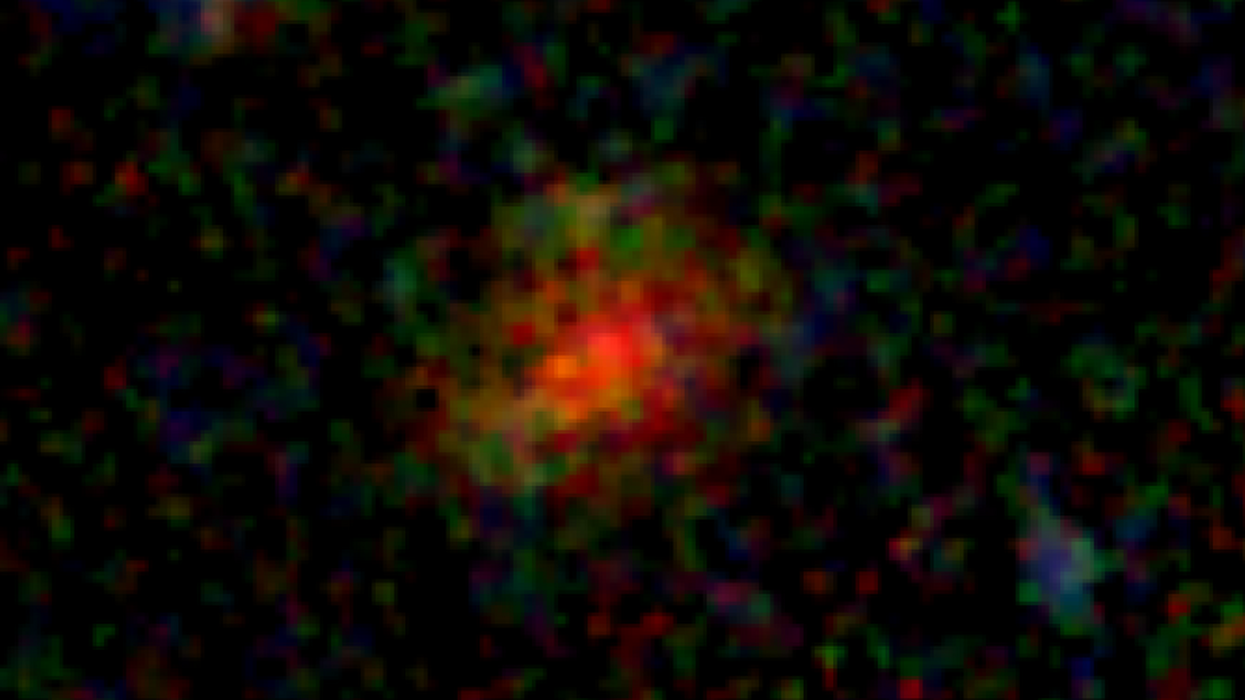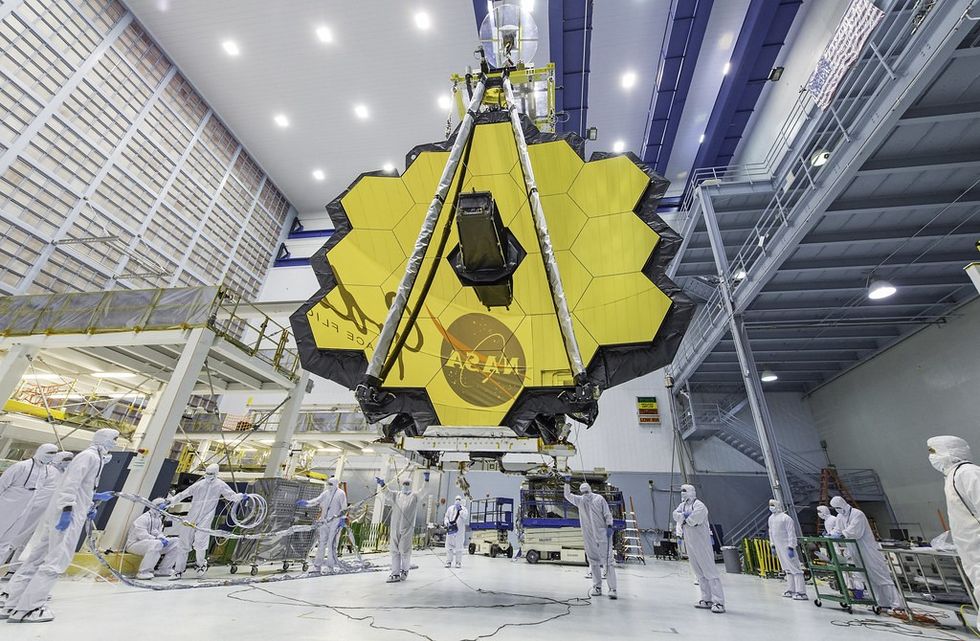Nasa telescope captures incredible image of 'monster' in deep space

Nasa telescope captures incredible image of 'monster' in deep space
|University of Texas at Austin

The James Webb Space Telescope, launched in 2021, spotted an 'eerie red blob' that had not been seen in over a decade
Don't Miss
Most Read
Latest
A Nasa telescope has spotted a shocking image of a “real monster” hidden within deep space.
The James Webb Space Telescope (JWST), launched in 2021, has captured images of an “eerie red blob” floating within space.
The strange sighting has been revealed to be a galaxy that forms hundreds of new stars every year.
The galaxy, dubbed AzTECC71, was first detected by astronomers using a ground-based telescope over a decade ago.
WATCH NOW: Nasa astronaut drops $100,000 toolbox into space
However, it vanished when the Hubble Space Telescope, a more advanced instrument, was used to try and spot the galaxy.
Now, the eerie galaxy has reappeared thanks to the advanced telescope, operated by astronomers at the University of Texas at Austin.
An artist’s impression of AzTECC71 shows the galaxy appears to have two eyes and a large gaping mouth as if it was screaming into the void.
The discovery of the galaxy suggests that massive star nurseries – previously thought of as rare – may now be 10 times more common.
LATEST DEVELOPMENTS:
The team at the University of Texas estimates that AzTECC71 is being seen at a redshift of around six, which translates to approximately 900 million years after the Big Bang.
Jed McKinney, a postdoctoral researcher at Austin University said: “This thing is a real monster. Even though it looks like a little blob, it's actually forming hundreds of new stars every year.
“And the fact that even something that extreme is barely visible in the most sensitive imaging from our newest telescope is so exciting to me. It's potentially telling us there's a whole population of galaxies that have been hiding from us.”
Galaxies that are dusty have been difficult to capture as the light from their stars is absorbed by a veil of dust.
“Until now, the only way we've been able to see galaxies in the early universe is from an optical perspective with the Hubble,” McKinney explained.

The James Webb Space Telescope (JWST) was launched in 2021
|Flickr
“That means our understanding of the history of galaxy evolution is biased because we're only seeing the unobscured, less dusty galaxies,” he added.
However, the James Webb telescope is equipped to pick up infrared signals that previous models could not.
“With JWST, we can study for the first time the optical and infrared properties of this heavily dust-obscured, hidden population of galaxies," McKinney said, "because it's so sensitive that not only can it stare back into the farthest reaches of the universe, but it can also pierce the thickest of dusty veils.”
The team of astronomers have used data from Nasa to map the universe for the COSMOS-Web project, which is trying to pinpoint a million different galaxies.










